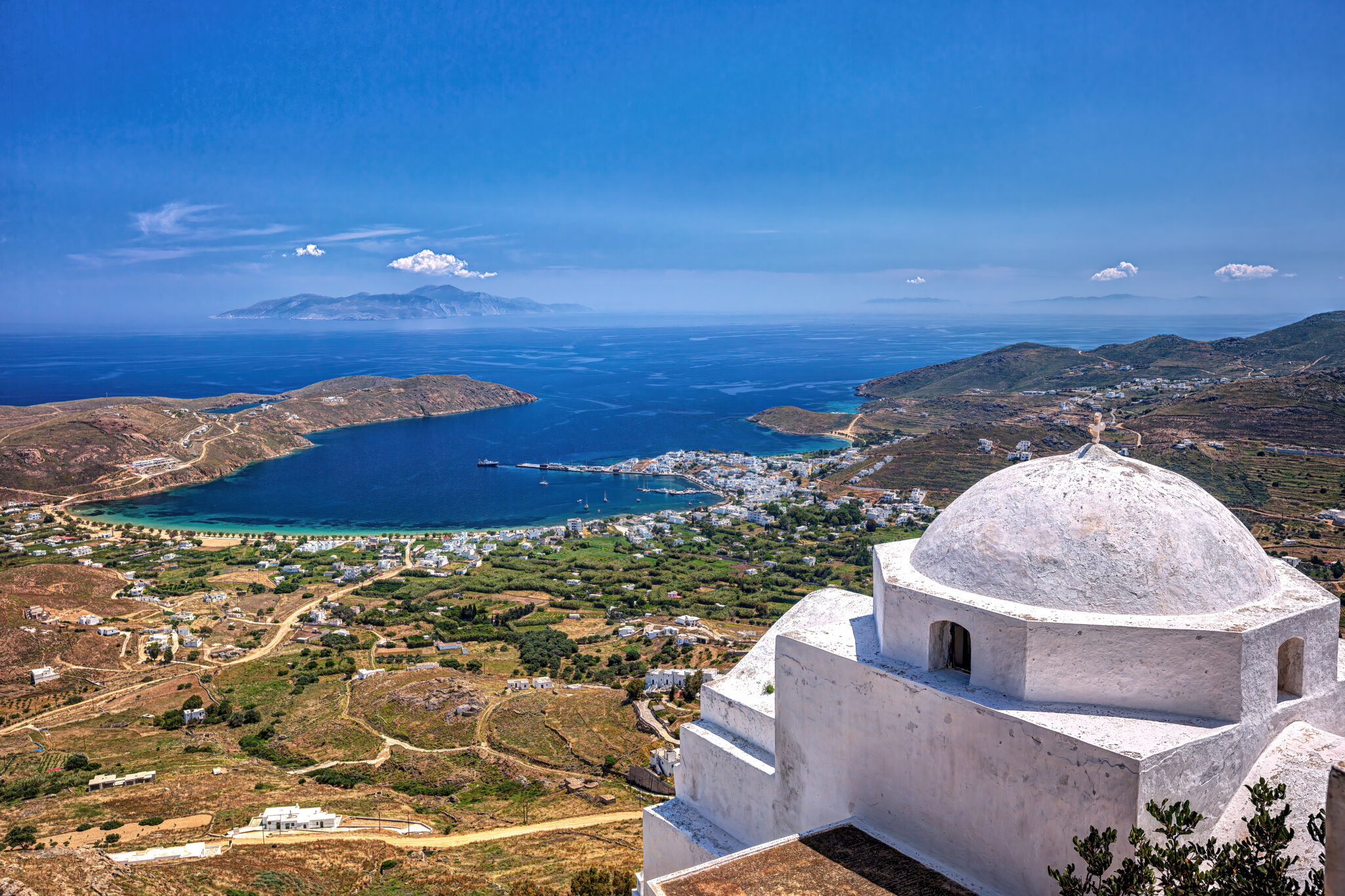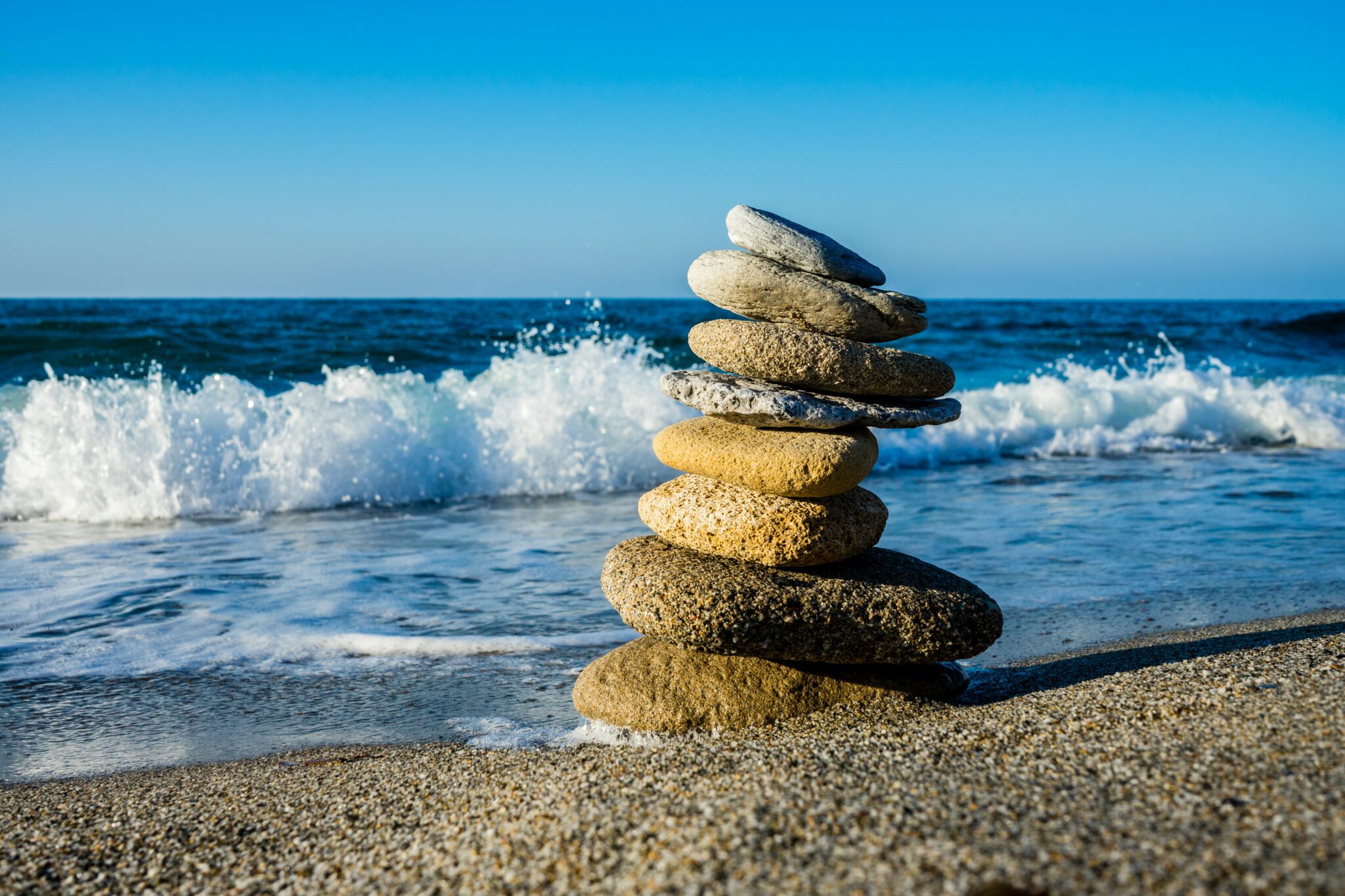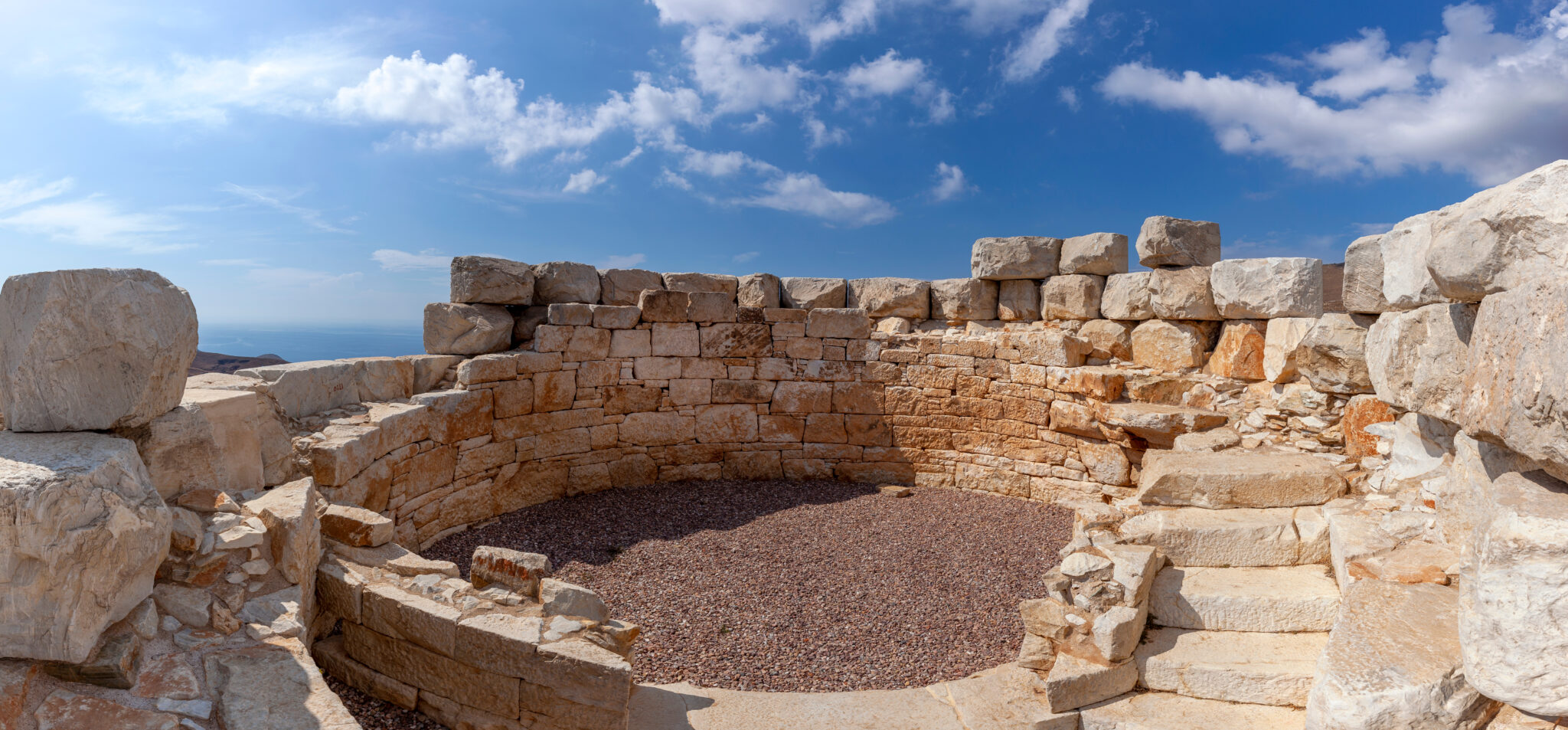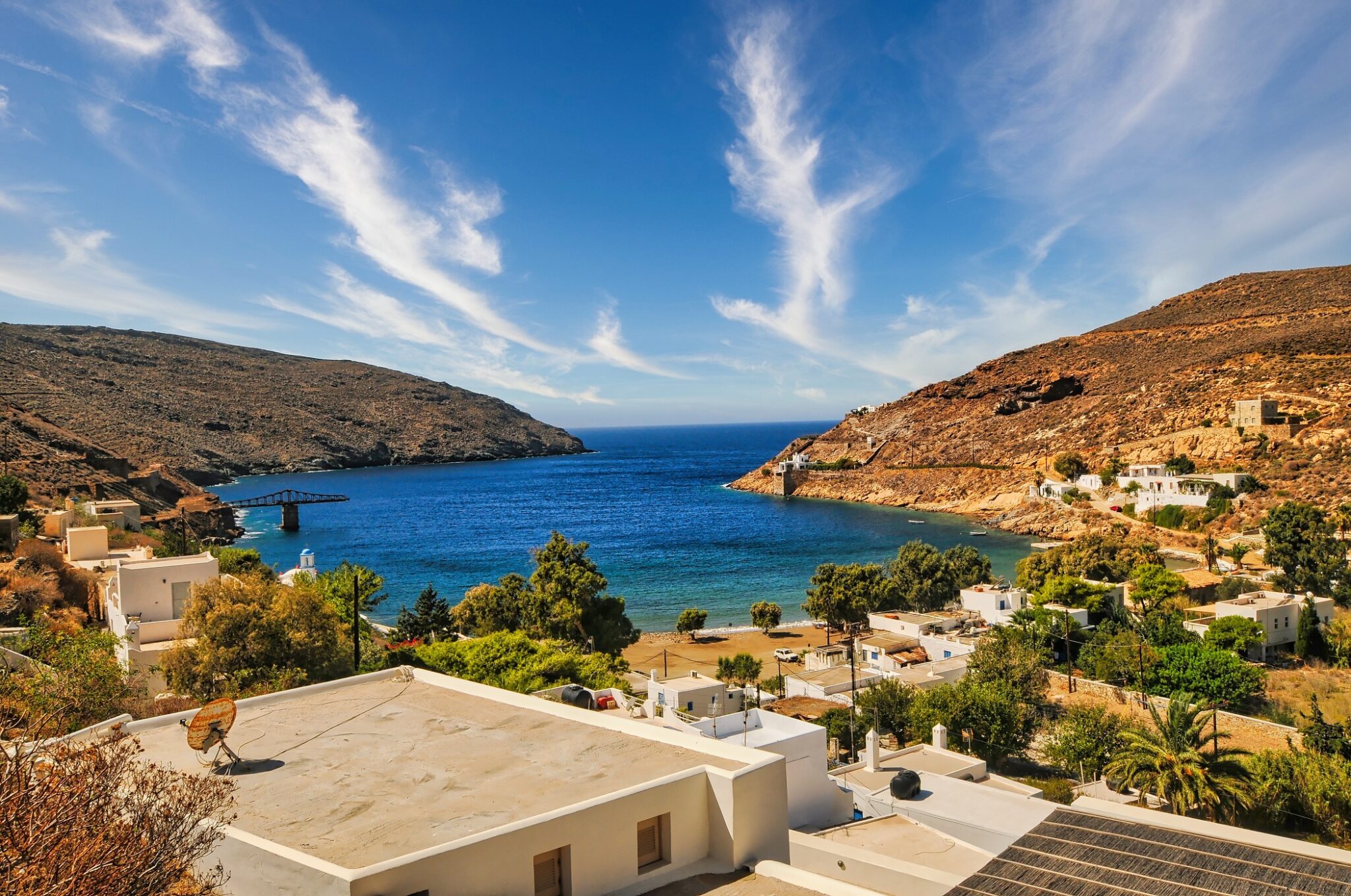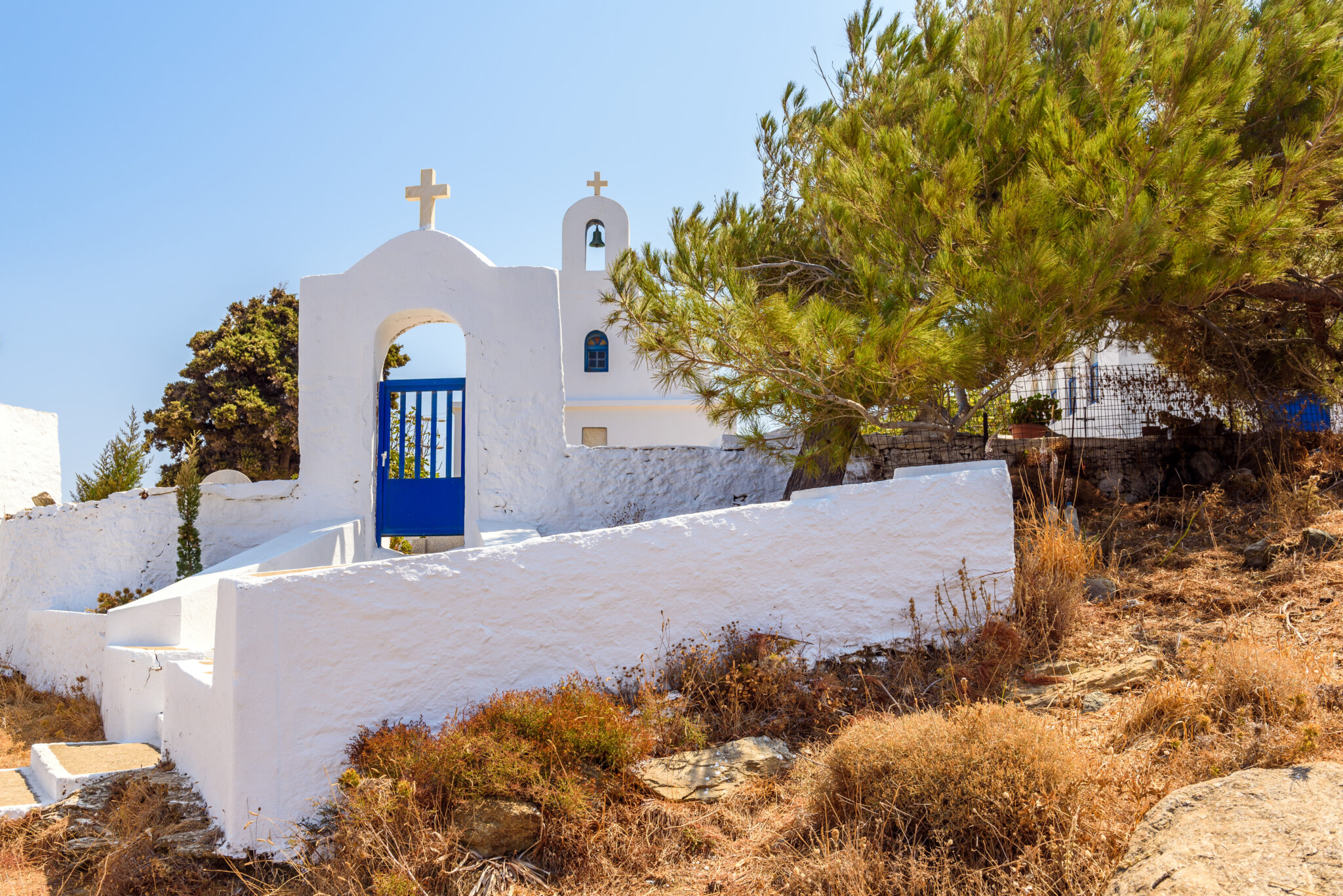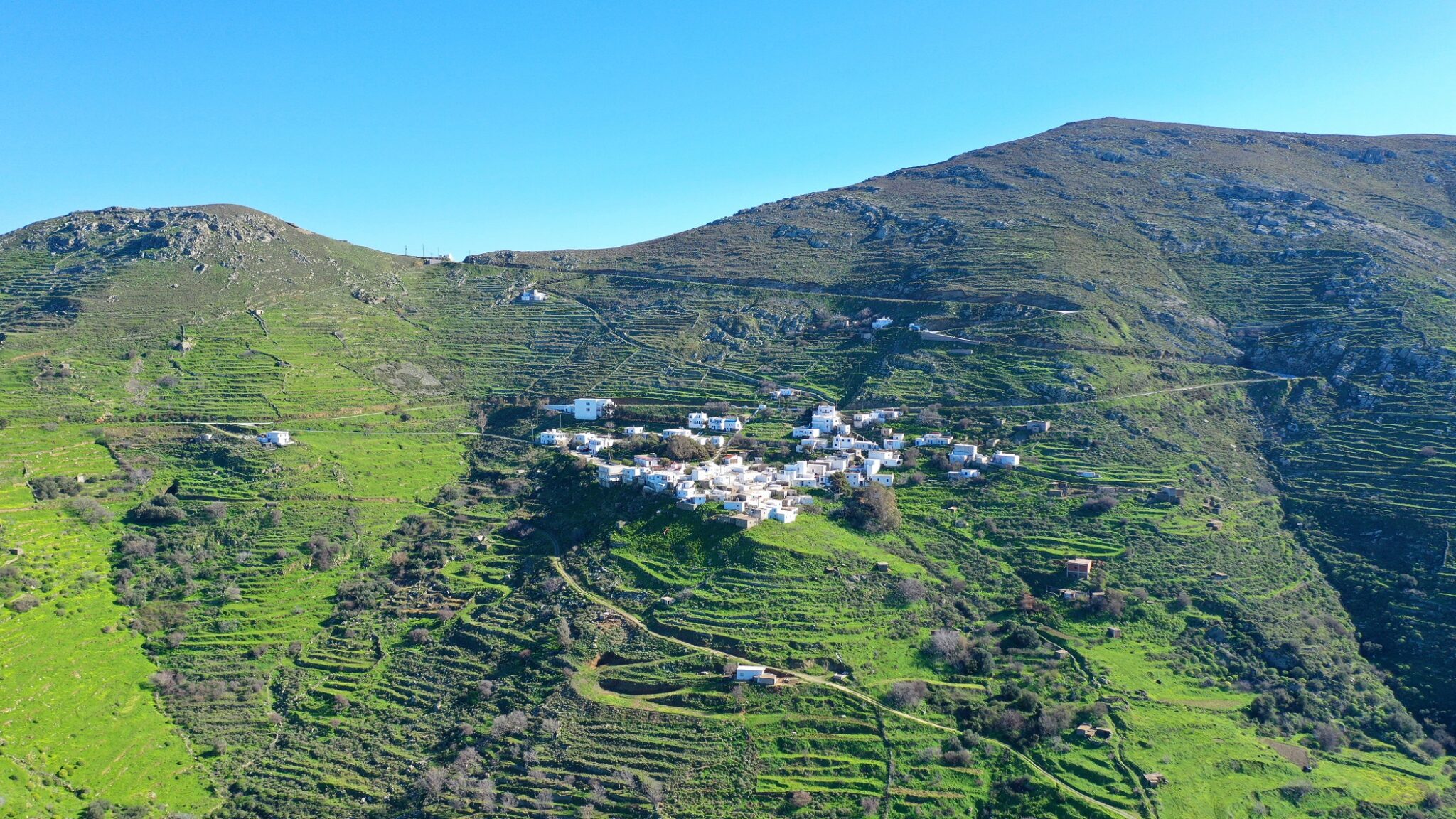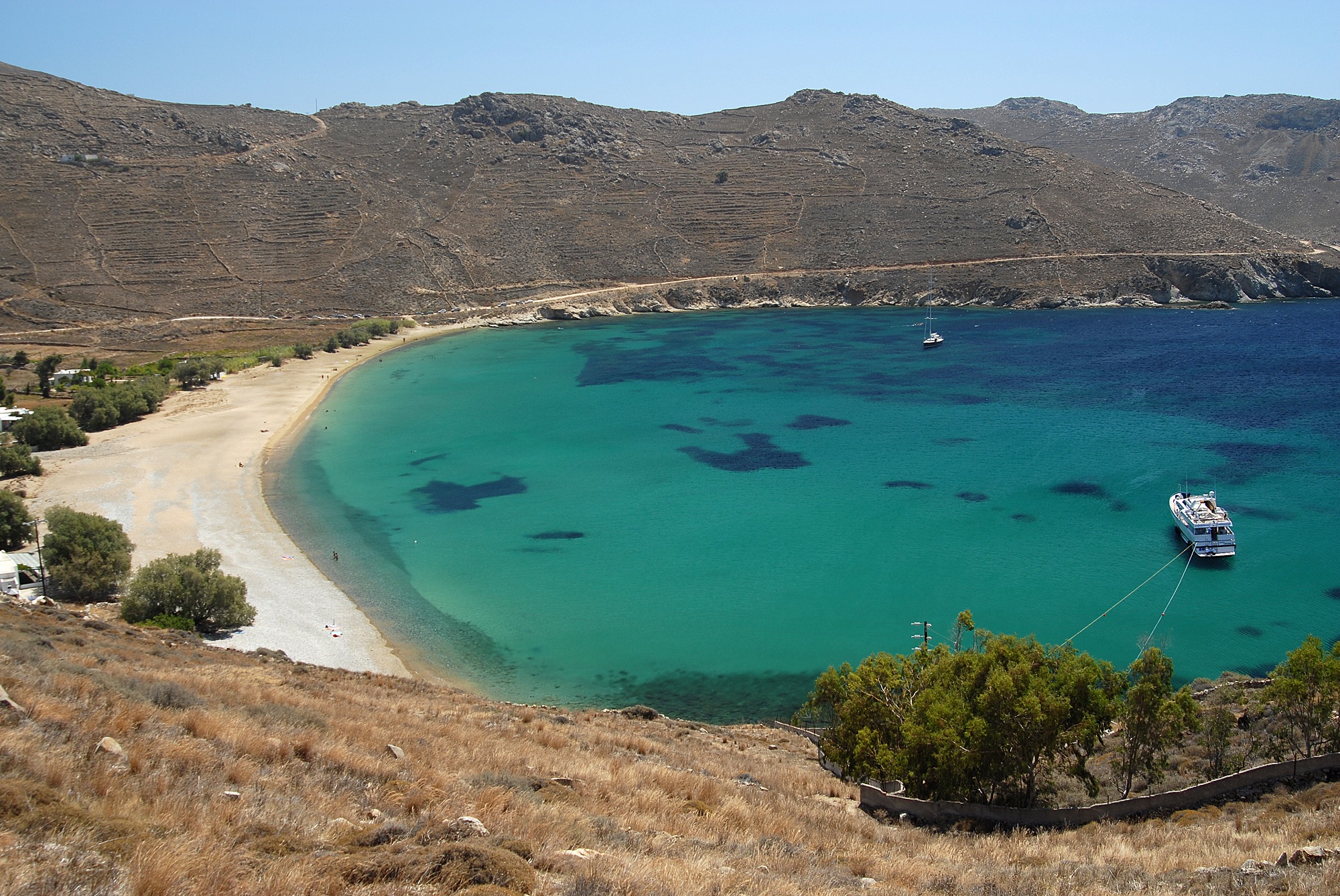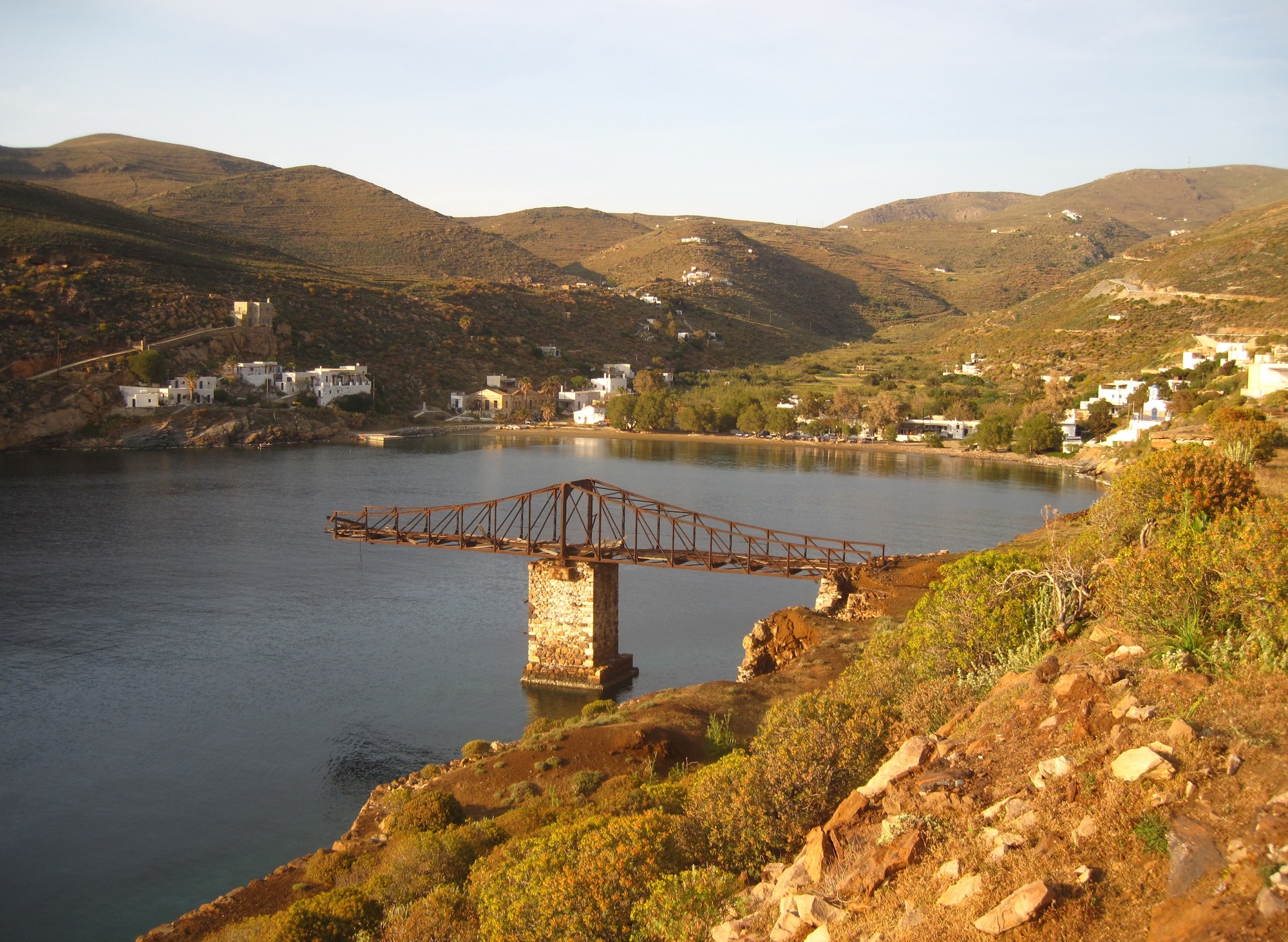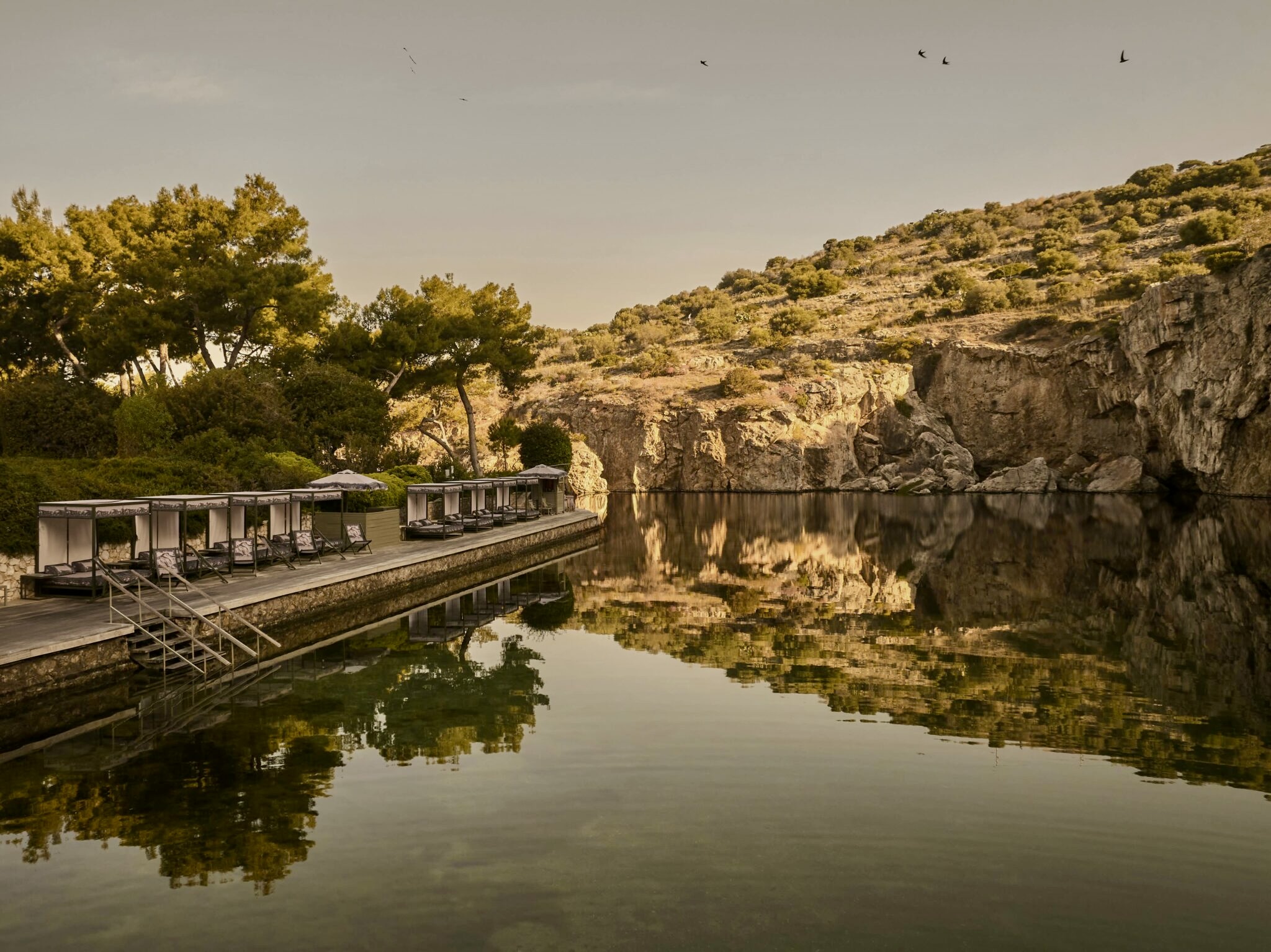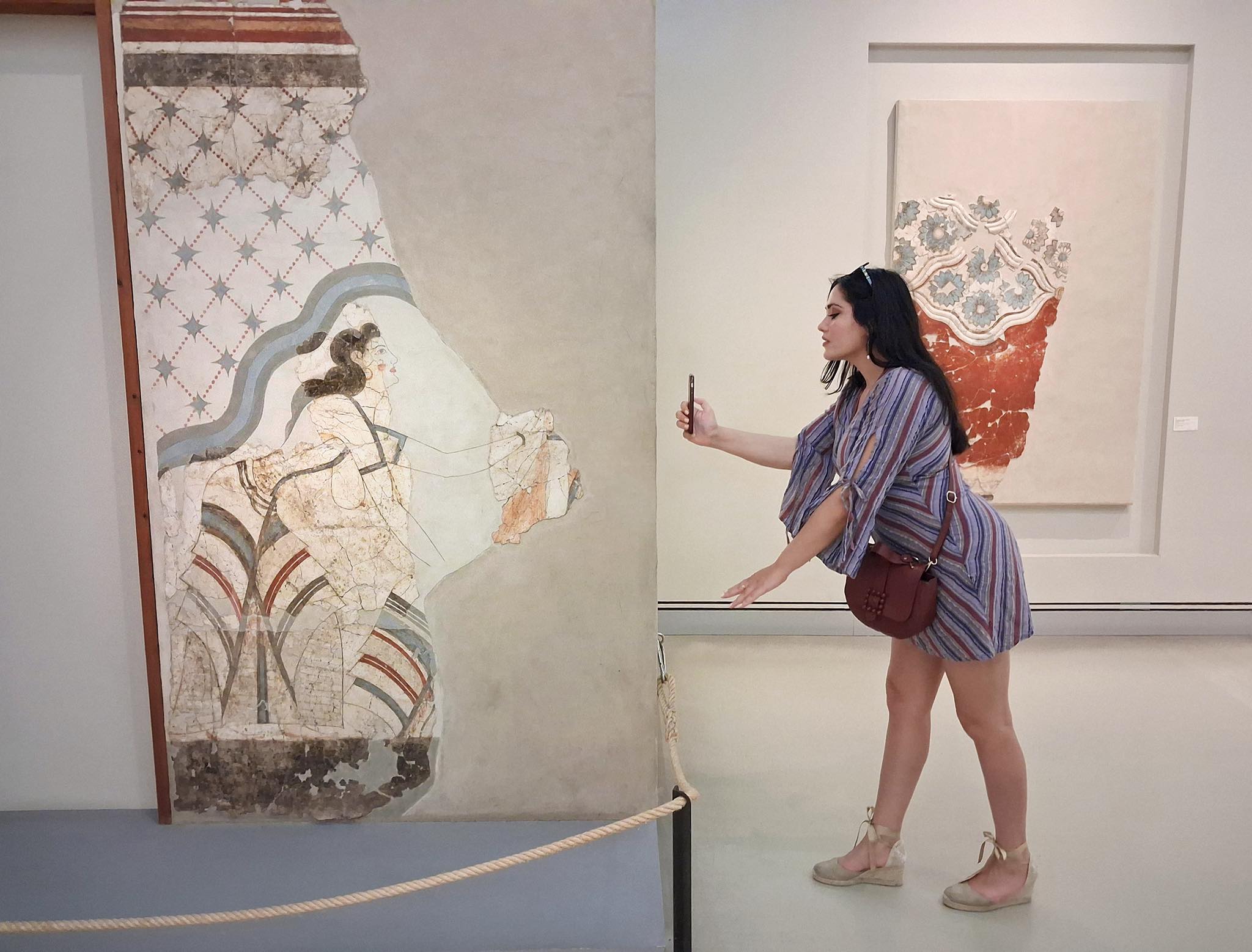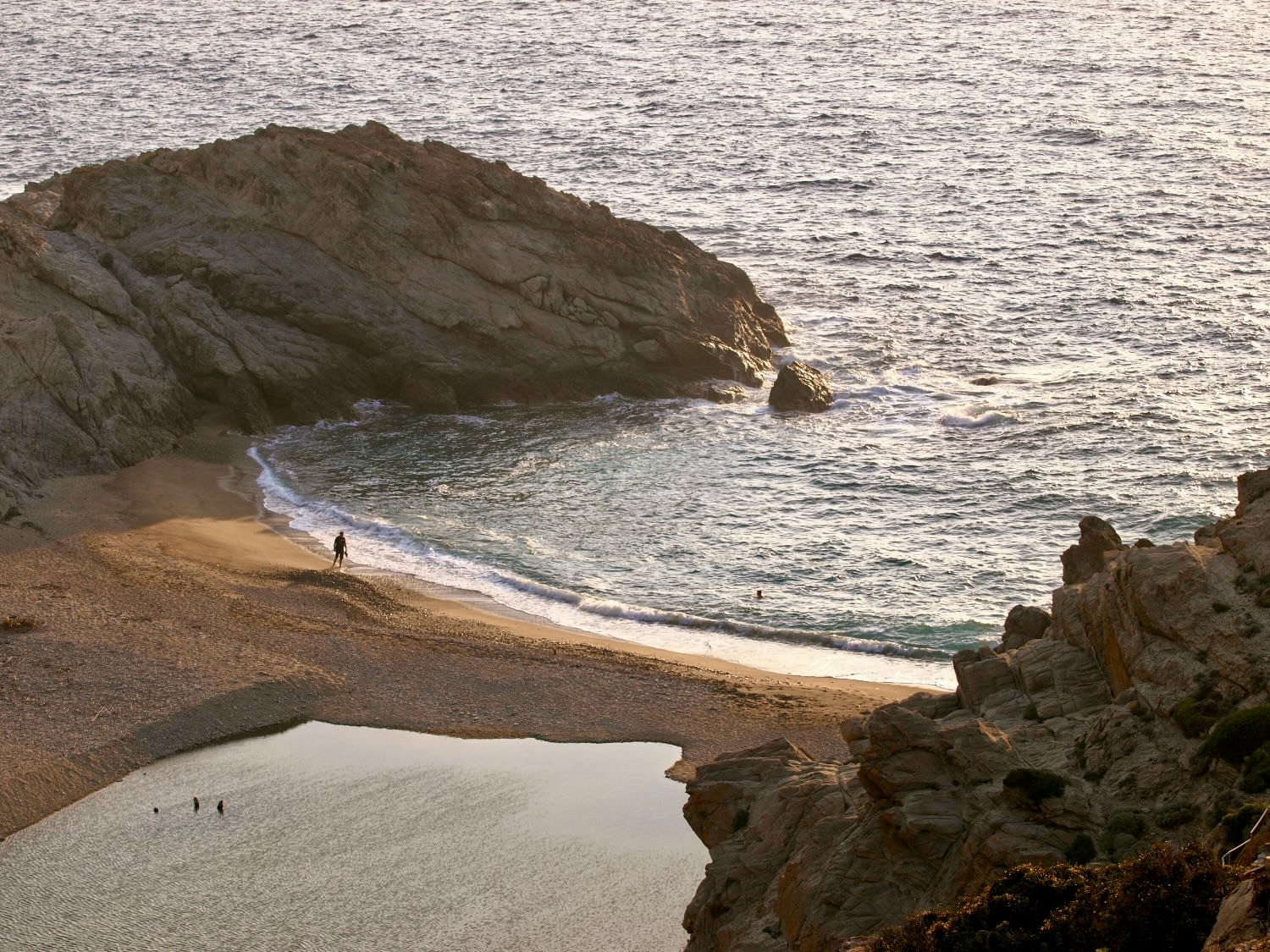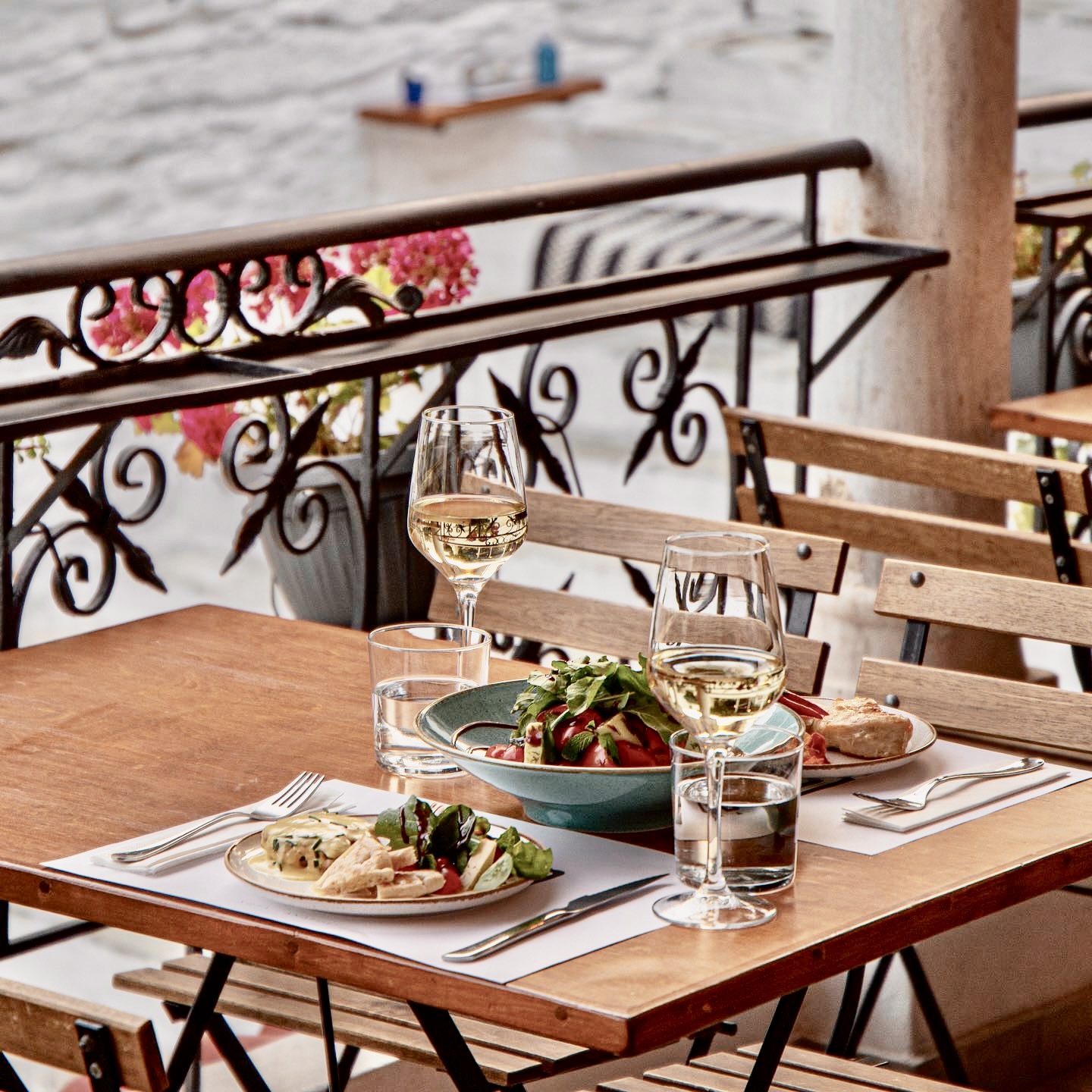Serifos is compact and rugged with craggy hills, historic mining sites, wide beautiful bays, picturesque villages, classic Cycladic architecture and endless beaches. The landscape is harsh and unforgiving and changes during the day as proud uplands cast shadows and the waters glitter blue and green.
The history of Serifos is written large on the land; towers watch over dark seas for marauding buccaneers, giant one-eyed monsters hide in caves, fortress churches hide within high walls, and all around the remnants and scars of thousands of years of mining.
The White Tower
The best preserved tower on Serifos, the White Tower is a circular white marble building that dominates the skyline above the Bay of Koutalas. Dated to the 4th century BC, it would have stood 12 metres high with a spiral staircase leading to higher floors. Today, only 5 metres of the walls remain but it is easy to see why the ancients chose to build here with commanding views over the surrounding land and seas. Probably part of a network of similar observation points, its main function was to protect the island from plunder.
Cyclops Throne
On the Cape Kyklopes, with a spectacular view of the southwestern side of the island is the Psaropyrgos, the throne of the Cyclops, so-called as the 8 metre wide building resembles a huge armchair. Believed to date from the Hellenistic period, there are also remains of an ancient precinct wall. Below is the entrance to the Cave of the Cyclops where it is told that the mythical one-eyed creature lived.
Grias Castle
Above Koutalas is the old ruined Kastro tis Grias, the Castle of the Old Woman. There are traces of a defensive walls and some ruined buildings and it is thought that its main function was to monitor the coastline for pirates and invaders. A steep climb, the reward is the sweeping panoramic views over the island and out to sea.
Megalo Livadi
A tiny village on the southern coast of Serifos, Megalo Livadi has a couple of tavernas and a handful of holiday lets. The beach is a narrow strip of sand and pebbles with trees for shade. Well sheltered from the wind, in the 19th century it was the busiest port on the island due to the local iron and bauxite mines. The Bridge to Nowhere, the abandoned loading ladder where ships were laden with their precious freight is a local landmark with a bloody history.
In 1916, the miners refused to let a ship dock as they were in dispute over their working conditions and lengthy hours. In the resultant meleé, 4 miners were shot and killed and there is a monument to them near to the ruined neoclassical former headquarters of the Serifos- Spilialeza Mining Company. Eerie and enigmatic, with the remains of a lost industry and a flourishing past, Megalo Livadi wrote itself into history as the conflict led to the establishment in law of an 8 hour working day.
Monastery of Taxiarches
Dedicated to the guardians of the island the Archangels Gabriel and Michael, the monastery was founded in 1572 but it is thought there may have been a church here since the mid 15th century. Fortress like in architecture with high walls and only one entrance 4 metres high up, the monastery held many fields of the Venetian rulers and had great wealth which attracted the attention of pirates throughout the ages. During the Ottoman period it numbered 100 monks under its aegis, while today a couple tend to the miracle-working icons and other ecclesiastical treasures.
Panagia
To the north of the island is Panagia, a beautiful village built amphitheatrically on a hill surrounding the eponymous byzantine church. With whitewashed houses and paved alleyways lined with flowers and sleeping cats, Panagia has much charm. At the top of the Dipotamata valley, Panagia has access to water and the villagers maintain orchards and fields all the way to Sikamia on the coast. The church of Xylopanagia is the oldest on the island dating to the 11th century, and its festival on August 15th attracts pilgrims from all over.
Koutalas
A small coastal village in the southwest of the island, Koutalas is little more than the beach in front of the village, neighbouring Vagia beach which is also in the bay, and a few small tavernas. There are remnants of the mining history of Serifos with galleries, rails and a loading ladder.
Old Mines
The existence of rich mineral deposits has been known since ancient times, and during the Roman era and under the Venetian rule mining intensified. In 1870 the Serifos Mining Company was formed, later to be taken over in 1885 by the German mineralogist Emile Grohmann who exported millions of tons of iron ore. A small town flourished at Megalo Livadi, outstripping Chora in economic activity, with specialist workers arriving from other islands and from Italy. Finally exhausting the mineral ores, the mines closed in 1964 but the remains of the workings and of the equipment used dot the landscape telling of a past of struggle and riches.
Read also:
Serifos: The ‘hidden’ gem of the Aegean Sea



